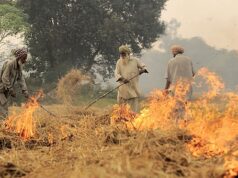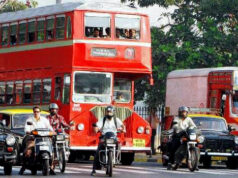Note: The Soviet calendar has been used for all dates.
“[…] did the military situation generate the domestic crisis which brought about the disintegration of the Tsarist regime; or were the pressures and contradictions within the social and political system already of such a refractory nature to make revolution in any case inevitable?”
~ Alan Wood, ‘The Origins of the Russian Revolution’
October 1917, the year that marks the triumph of Communism in an economically staggering, war-drained, poverty-stricken, and an ideologically conflicted society — the Tsar’s Russia. On an eerily quiet morning, members of the Bolshevik party marched into the Parliament, better known as the Duma, and overtook the interim government of disagreeable politicians sitting in the Winter Palace, residence of the former Tsar. As with any coup, all major lines of communication were captured, roads blocked, and everyone who was anyone was detained. It is a common assumption that a coup d’etat usually provokes reactionary forces in society, or at least in the threatened leadership. In Russia, however, not one finger rose in protest. This was perhaps modern political history’s least violent power-grab. For the Russians, it was just another morning of unseemly politics that they had grown accustomed to. That is not to say that they were an uncaring or docile lot! In fact, they were the exact opposite. In February of the same year, the average Russian had taken to the streets and had managed to achieve the impossible — they overthrew the Tsar, once and for all. No Communists, or Liberals, or Fascists, or military, or foreign intervention needed — just the good old will of the people. Since then, it had been a game of musical chairs between the parties, the leaders, and the unions. The Bolsheviks were but one of the many players. The only difference — they managed to change the game.
To unfold the events of October 1917, it is imperative to first understand the seven months of political turmoil preceding it. The Romanov dynasty’s rule over Russia lasted for nearly three centuries. It is only natural that their overthrow in the revolution of February 1917 with little bloodshed (and an on-going World War) is a contentious part of history. Some historians argue that the First World War had sounded the knell on the Revolutionary movement, while others argue that the revolution had been a long time coming (since 1905 to be precise) despite the Great War. There are also scholars who have debated the role of the war — that in fact the international fiasco had delayed the Revolution which was on-track pre-1914. Others view the war as a much-needed wake-up call for a Revolution that had already cooled off. Whatever the reason, there is consensus among historians over the complex nature of the February Revolution. It was not a linear process, it was most definitely not planned, and it was neither led by a single person nor a party.
Economically, 1913 was a good year for the Tsar’s Russia. There was growing capitalism. Heavy industries of oil, coal, mining and metallurgy were rapidly developing. Foreign investment was on the rise. Railways were spreading and light-industries like textile and food-processing were also establishing themselves. The rate of growth exceeded 5 percent per year. America and Russia were now being viewed as the emerging powers of the future. Politically, the agitations of 1905 seemed to have died down and the Tsardom appeared stable. The army had been reorganized as well. As Marc Ferro points, ‘Not everyone agreed that the situation had really improved, but the memory of 1905 was rapidly fading.’
However, even in this seemingly stable environment, the undercurrents of distaste were evident. The labour class faced bad living and working conditions clubbed with poor wages. The Duma existed only in principle and the Tsar’s autocratic power remained unchallenged. The Intelligentsia constantly voiced its discontent with the Tsar’s rule, and the rate of strikes and protests was frequent. The number of strikes recorded in 1910 was 46,643 strikes while pre-war 1914 saw as many as 1,449,234 strikes. It is around these numbers that historians argue the inevitability of the revolutionary course, had the war not redirected everyone’s attention. ‘Patriotism is usually stronger than class hatred, and always stronger than Internationalism,’ George Orwell, Nineteen Eighty-Four.
Russia entered the war with a lot of patriotic fervour, mass mobilization for a vast army, a weak arms industry, poor communications, lack of engineering capacities, and ill-equipped to bear the costs of supplying for a standing army. The initial fervour did deflect protests against the Tsar, but mass recruitment soon translated into a shortage of labour elsewhere. As farmhands emptied the fields and industrial workers traded their shifts for combat drills, the stage was set for the failure of the war machinery. Within the first six months, Russia was severely short on military equipment. In the spring of 1915, Germany launched a full-scale attack on Russia and forced it into a prolonged retreat. As the Russians pushed back their frontlines, the Germans captured the resources and industries they left behind. Soon a blockade ensued, cutting off Russia from her western allies and their immediate help. The land routes in the west were closed and the harbours facing the Pacific were treacherous.
As the war progressed, the relationship between the towns and the countryside worsened. All resources and transportation had been re-directed to support the frontlines. This led to a shortage of food in the towns. An unfortunate game of suspicion commenced. On the one hand the industrial workers starved, accusing the farmers of hoarding food. The farmers, on the other hand, blamed the towns for shortage of consumer commodities such as agricultural equipment, footwear, textile, kerosene, nails, needles etc. The turmoil of war-time administration and the material hardships and on both sides inflamed hostility. In the countryside, this promoted a behaviour of ‘what we have we hold’ among the peasants, further worsening the conditions. In 1916, the harvest was down by twenty percent in the south and by forty percent in the north. Consequently, in the winter of 1916–17, there was a severe shortage of bread, fats, sugar and other staple foodstuffs in the urban centres. Despite being given top priority, ration for the army began to dry up.
The urban population, particularly the urban poor, were the worst hit. ‘Civilians in town and country found themselves caught up in a desperate struggle to meet the insatiable demands of a conflict in which prospects of victory seemed ever more remote,’ observes John Keep. The number of strikes once more mounted and only a fraction had political motivation. The lack of coordination and direction made these strikes unpredictable to both the Reactionaries and the Tsar’s government.
Petrograd (St. Petersburg) was particularly hard-hit from wartime shortages. Around the middle of February 1917, only a ten day supply of flour remained. On February 18, a few hundred men began to protest for higher wages. By February 22, the few hundred had transformed into a few thousand. On February 23, women workers in the textile industry went on strike — the occasion was International Women’s Day and the demand was for ‘Bread and Peace’. The protestors sent out delegates to the mine factories and soon a larger crowd gathered. The strike was not led by anyone. In fact, as Trotsky later recalled, there had been a collective effort by the most moderate and the most radical groups to not strike. The leaders feared that the regiments stationed in Petrograd would open fire on the protestors should a mass strike occur. ‘Not a single organisation called for strikes on that day. What is more, even a Bolshevik organisation, and a most militant one — the Vyborg borough committee, all workers — was opposing strikes.’
Soon large crowds flocked the city centre. On February 26, the stationed troops open fired on the protestors under the Tsar’s order. By the same evening, the brutality of the suppression pushed the troops into mutiny and they joined the rioting crowds. To summarise ‘…It was in fact shortage of food in St. Petersburg which finally broke the back of the Russian Empire. The troops refused to fire on the rioting crowd, and Tsardom collapsed,’ Alec Nove.
The February revolution was spontaneous and the revolutionary parties played no direct role in its making or success. If anything, the parties almost didn’t expect it and were to an extent baffled by its emergence and success. In the aftermath of the collapse, the power vacuum was filled by two political structures — the Provisional Government (better known as the Duma), and the Petrograd Soviet which was the most powerful workers’ union in the capital.
Although the nature of the February Revolution was decidedly popular, it is often considered a triumph of the bourgeoisie as the main consequence of it was the rise of the urban elite to the seats of the Duma. The Provisional Government was mainly manned by the Liberal Parties (Cadets, as they were known). However, the Duma did not hold absolute power. The Petrograd Soviets were a non-party worker’s organization. The representatives elected by factory workers mostly consisted of Social-Revolutionaries, the Mensheviks and the Bolsheviks. What this meant was that while the Liberals were the de-jure legislators, it was the workers who held the de-facto power.
Growing support of the Petrograd Soviet forced the Provisional Government to recognize its claim of authority. Kerensky of the Social-Revolutionaries was appointed as the Minister of Justice in the government and served as an instrument of communication between the government and the Soviet parties. Lenin saw this attitude of the Soviets as a ‘voluntary surrender of state power to the bourgeoisie and its government.’ At the time though, this was anything but erroneous. In the Marxist trajectory of history, the collapse of monarchy is supposed to be followed by a triumph of capitalism (which will eventually be followed by a triumph of the workers on the wicked capitalists under the Socialist revolution). Therefore, the prevailing mood of the Soviets was not in favour of seizing state power or governmental authority. In fact, most leaders believed that Russia was ripe for a bourgeois and not a Socialist rule. To them, the Bourgeoisie Revolution was not yet over and without its completion a Socialist Revolution should not be launched.
The three major Marxist parties of the Mensheviks, Bolsheviks and Socialist Revolutionaries agreed on this view. At the time, with most of its senior leaders in exile or hiding, the reigns of the Bolsheviks rested in the inexperienced hands of Shylapnikov, Zalusky and Molotov. As E. H. Carr points, ‘The position was embarrassing.’ The Party Journal, Pravada was once more resumed with its first issue of March 5, 1917. On the very same day, Molotov attended the Petrograd Committee Session and proposed that the Provisional Government be seen as counter-revolutionary (even in the Bourgeoisie sense) and be over-thrown to bring about a truly democratic revolution. This is one of the few instances in history when a staunchly Communist party has advocated for the good fight of liberty and democracy. However, the Committee was in favour of not opposing the Government so long as it worked for the Proletariat.
For the Bolsheviks, things further entangled as Stalin, Kamenev and Muranov returned from exile on March 13. In the succeeding editions of the Pravada, one can see the agreement of the senior leaders with the Petrograd Committee. They were in favour of the Provisional Government — under certain conditions of course. The ‘Bolshevik formula’ (led by Stalin) was to take the lead and rally the Proletariat under the Soviet banner so as to put pressure on the Duma to work for the people and to ultimately move the ‘Russian Revolution’ forward. The ‘Menshevik Formula’ was to direct the Government from behind i.e. to support it by providing a strong opposition in their ‘constitutional partnership’ with the Duma.
Such was the Socialist politics of the day when Lenin returned from exile on April 3 — and he had a lot to say.
Immediately on his return, Lenin published a set of ten directives for his comrades. This was known as the Aprelskiye Tezis, or the April theses. Much to everyone’s surprise and contradictory to the prevailing popular opinion of the Socialists, Lenin denounced the Provisional ‘Bourgeois’ Government and spoke of a dictatorship of the Proletariat along with an end to the war. According to Lenin, the Bourgeoisie Revolution (meant to overthrow feudal autocracy) was over as the Provisional ‘Bourgeois’ Government existed in dual authority with the Soviets. ‘To this extent,’ he said, ‘the bourgeois democratic revolution is finished,’ because, ‘the revolutionary-democratic dictatorship of the Proletariat and the peasantry has been realised.’ Needless to say, Lenin’s theses was criticised from the outside as well as the inside. Kamenev remained at cross with Lenin over his ideas right up till the coup. The battle between Lenin and his sceptics was long and vile. As Sheila Fitzpatrick points, ‘It remained an open question whether Lenin’s strategy was that of a master politician or simply that of a cranky extremist.’
Lenin was many things — a visionary, an orator, a politician — but he was not one to let up. Soon he was able to convince his comrades of the fault in their stars. At the All-Russian Party Conference or the ‘April Conference’, Lenin’s resolutions to condemn the Provisional Government for continuing to participate in the Imperialist War (the Socialist tag for WW1), and the Duma’s ‘open collaboration’ with, ‘…[the] bourgeoisie and land owners’ counter-revolution,’ was passed with little resistance.
‘All power to the Soviets!’ — Lenin declared.
The Bolsheviks began to isolate themselves from the parties, policies and propagandas of their fellow-Soviets. Simultaneously, the popularity of the Bolsheviks was also on the rise. By the end of April the part had 100,000 members and by October a total of 350,000 as compared to the 24,000 members during the February Revolution. However, in the June Conference of the Soviets, when Lenin openly declared the Bolshevik’s ability to take on all responsibilities of the power alone, his declaration was seen more as bravado than a threat. ‘It was a serious challenge, however, because the Bolsheviks were gaining popular support and the coalition socialists losing it,’ says Fitzpatrick.
Early in May, the cabinet of ministers was re-shuffled with a shift in the power balance within the Duma. This time, six soviet ministers received appointments, — two from the Socialist Revolutionaries, two from the Mensheviks, and two independent. Instead of increasing the power and prestige of the Mensheviks and SRs, the result was quite opposite. Both parties saw splits between those who supported the ministers and those who didn’t. The Bolsheviks, for their part, completely rejected the idea of participating in any petty Provisional Government. They offered a non-negotiable policy of ‘peace at any price’ — a peace that the Russian people were desperate for.
Turmoil in the following months only grew worse. In July, despite the persistent demands of peace, the Russian War Office launched an offensive at Galicia against the Austro-Hungarian forces. This provoked a spontaneous uprising in Petrograd for which the Bolsheviks were held responsible as they were the only party openly and staunchly opposing the war. A systematic crackdown was ordered on the party. Leaders were arrested. Zinoviev and Lenin went into hiding and the Pravada was banned. In the following days Stalin lead the charge against the ‘counter-revolutionary’ Bourgeoisie Duma.
August witnessed a failed coup led by Commander-in-chief General Larv Kerlinov. This attempt to seize power by the right sent all the left parties in frenzy. With its leadership released and out of hiding, Bolsheviks now experienced the vigorous support of the masses. As Fitzpatrick points ‘The Bolsheviks strength was that they were the only party uncompromised by association with the bourgeoisie and the February regime, and the party most firmly identified with the ideas of workers’ power and armed uprising,’
Another important consequence of the failed coup was the ‘Red Guards’. The Red Guards were militia units formed by the workers. Their parent body, the Petrograd Soviet’s Military Revolutionary Committee, was dominated by Bolsheviks. Fearing the German advance towards Petrograd, the Government chose to take no action against this militia.
Backed by an armed body, Lenin now advocated for the need for armed action to take-over of the Government. In September he wrote a short article titled ‘The Crisis is Ripe’ where he declared a world-wide Proletariat Revolution. ‘We cannot hope for more favourable conditions,’ he wrote, ‘The hour of action is at hand. The crisis is ripe. The whole future of the international workers’ revolution for socialism is at stake. The crisis is ripe.’ In his meetings with party members he also made it clear that he no longer wanted to hide under the Soviet banner and that the insurrection must be the Bolshevik’s work. Lenin over-rode all objections from leading party members (mainly Kamenev and Zinoviev). It was time for the Bolsheviks to take power.
The uprising was launched on 27 October (7 November Georgian calendar) and went on for two days. Backed by the Red Guards, the Bolsheviks seized several vantage points. The two stationed regiments in Petrograd declared their loyalty to the Revolution, as did the sailors docked in Petrograd’s harbour. The delay in entering the palace was because the rebelling forces did not have enough artillery. But they faced no resistance.
Louise Bryant, an American journalist, was present for the whole course of the events. She was attending a meeting of the Council of the Republic at the Mariinsky Palace on the day of the coup. The Council had been set up to diffuse the growing tensions in the masses. As she recalls, ‘Word flew round that they were arresting the Council of the Republic. As a matter of fact no one thought the Council of the Republic was important enough to arrest. What really happened was tragically funny. A big Cronstadt sailor marched into the great elaborate red and gold assembly chamber and announced in a loud voice “No more Council! Go along home!” And the Council went.’
Following the sacking of the Council, Bryant followed the pulse to the Winter Palace to learn about the fate of Kerensky, head of the Provisional Government and a man she respected. Bryant and her fellow journalists were allowed entry into the Palace while the ‘battle’ was on-going. ‘…we went directly to Kerensky’s office. In the ante-room we found one of his smart-looking aides who greeted us […] he told us, […] Kerensky had also fled after an embarrassing experience which might have caused his capture. At the last moment he found that he did not have enough gasoline for his automobile, and couriers had to be sent into the Bolshevik lines….,’
The Duma was disbanded, the Ministers arrested, and orders were passed to maintain peace. It seems Russia had seen enough violence for the past four years. And so the Revolution was over.
The ultimate Bolshevik triumph can be credited to several factors. The duality of policies between the left parties, the lack of adequate steps by the Provisional Government to end the war, the Kornilov insurrection, the splits in the SRS and Mensheviks, peasant land hunger, shortage of basic necessities like food. All major parties could be associated and blamed for several of these factors except the Bolsheviks. These are some of the external reasons.
However the main reason for Bolshevik victory, as most scholars agree, was their non-negotiable policies in favour of the people. To the defeated soldiers, they promised peace, to the poor peasants they promised land, and to the workers they promised bread. Furthermore, their appeal went beyond the class boundaries and beyond the power centres of Petrograd and Moscow. They appealed to the Nationalist aspirations of the Jews, the Poles, Finns, Balts, Georgians and several other minorities. To them they promised their right to secede. As Alan Wood points out, ‘The Bolsheviks were simply much more in tune with popular feeling than either the constitutionally-minded liberal politicians or the moderate socialists.’
This argument can be concluded in Christopher Hill’s words, ‘In Russia in 1917 it was the Bolshevik mastery of the fact that was decisive. The party knew exactly what it wanted, what concrete concessions to make to different social groups at any given stage, how to convince the masses of the population by actions, its own and their own […] It was this which won the confidence of a following sufficient to enable the Bolsheviks to seize and retain power.’
On October 26, in the Decree of Peace, Lenin proclaimed, ‘we have overthrown the government of the banker.’ It wasn’t the end though. The battle had only just begun.
REFERENCES
-
- Fitzpatrick, Sheila (1982), The Russian Revolution, Oxford, Oxford University Press
-
- Carr, E.H. (1985), The Bolshevik Revolution, 1917–1923, Vol. 1 (History of Soviet Russia), W. W. Norton & Company
-
- Nove, Alec (1969), An Economic History of the U.S.S.R. Penguin Books
-
- Hill, Christopher (1947), Lenin and the Russian Revolution, Penguin Books
-
- Ferro, Marc (1972), The Russian Revolution of February 1917 trans J. R. Richards, London, Routledge and Kegan Paul
-
- Wood, Alan (2003) The Origins of the Russian Revolution (1816–1917) Third Edition, Routledge
-
- Schapiro, Leonard (1984), The Russian Revolution and the Origin of Present Day Communism, Hounslow, Basic Books
-
- Moss, Walter G. (1997), A History of Russia Vol 2, New York, McGraw Hill
-
- Keep, John L. H. (1976), The Russian Revolution, New York, W. W. Norton &Company
-
- Trotsky, L.(1932), The History of the Russian Revolution Volume 1
- Bryant, L. (1918) Six Red Months in Russia
Post Disclaimer
The opinions expressed in this essay are those of the authors. They do not purport to reflect the opinions or views of CCS.






